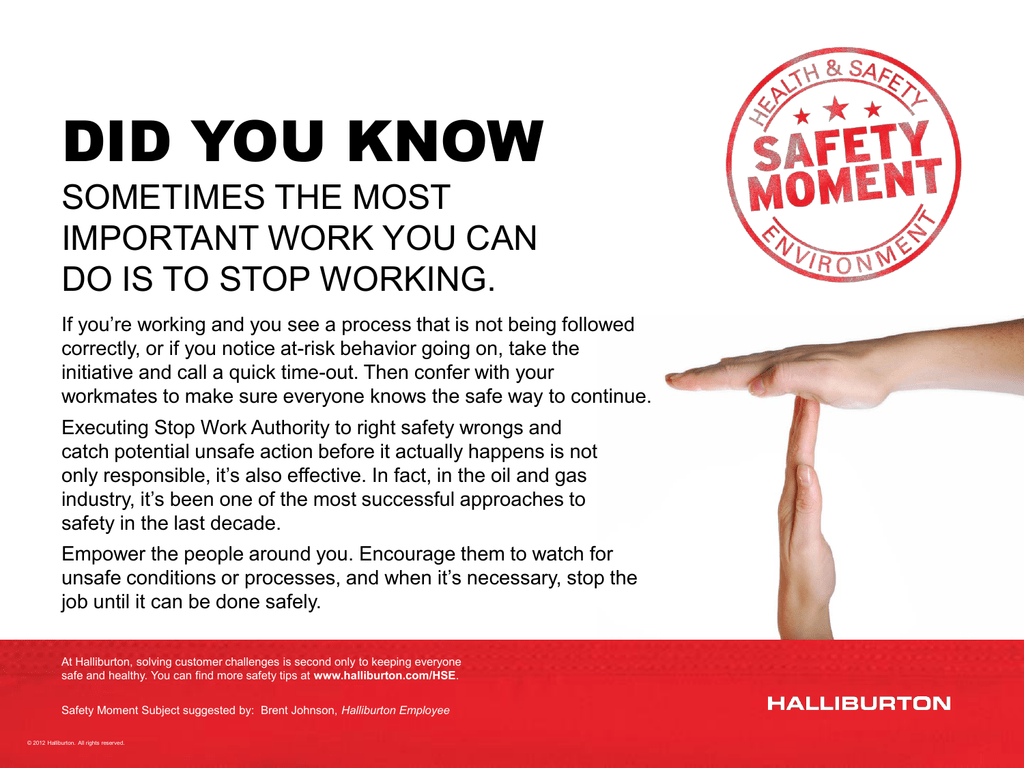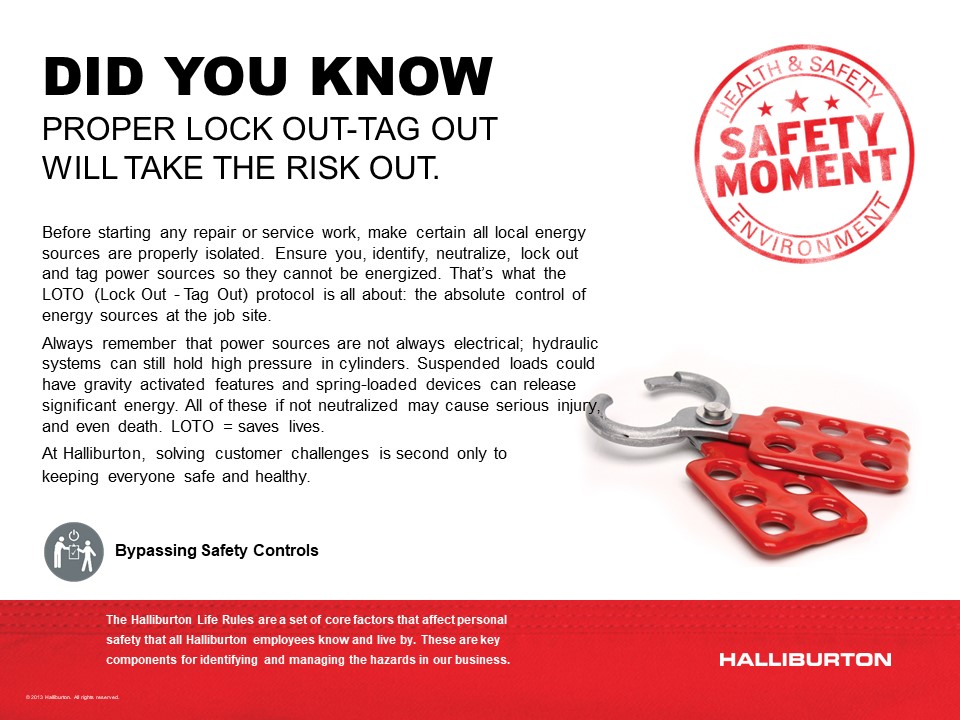

Some of the best ways to avoid falls in this work environment include re-engineering the work some working at heights is not required using fall prevention & protection properly and making sure workers are aware of the fall hazards and controls.

#SAFETY MOMENTS HOW TO#
OSHA, the National Steps Network, and the NIOSH Alliance created this hazard alert titled Hot Work in Oilfields that explains how to prevent fatalities in tanks, tankers, and similar equipment.OSHA's Oil & Gas Drilling and Servicing eTool helps explain hot work, fire, and explosive hazards involved in oil and gas drilling.OSHA offers an eTool to help identify oil and gas drilling ignition sources at wells.Here are some useful resources for hazard ID and control: Prevention begins with knowing the flammable/combustible qualities of the materials being extracted and/or worked with, and continue to understanding the potential of tools and equipment to cause ignition. The presence of flammable and/or combustible vapors and gases and numerous potential ignition sources make explosions and fires a real concern in oil and gas extraction.
#SAFETY MOMENTS MANUAL#

To reduce these fatalities (as well as injuries), check OSHA's Motor Vehicle Safety webpage NIOSH's Motor Vehicle Safety webpage these tips on prevention strategies re: work-related roadway crashes from CDC & NIOSH and this NIOSH fact sheet to help oil & gas workers avoid fatigued driving at work. In fact, OSHA notes that just around 40% of fatalities in this industry are from highway vehicle incidents. And likewise, this need for transportation often leads to motor vehicle accidents and fatalities. It's common that oil & gas extraction workers and equipment need to be transported to well sites that are quite remote.

Let's take a closer look at each of the hazards listed above.
#SAFETY MOMENTS DOWNLOAD#
OSHA lists the following as the most common causes of fatalities that occurred during oil and gas extraction work processes:įor additional information on preventing occupational fatalities at work, see this article on Preventing Fatalities, this article on using Risk Management to Reduce Occupational SIFs, and download this free guide to using risk management for occupational safety and health. Leading Causes of Fatalities in the Oil & Gas Extraction Industry


 0 kommentar(er)
0 kommentar(er)
